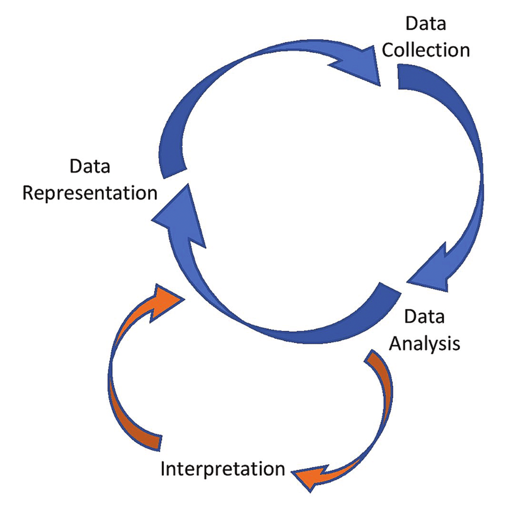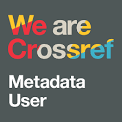Psychological Development and Children's Academic Achievement: A Study of the Impact of Broken Homes
DOI:
https://doi.org/10.51574/ijrer.v4i3.3755Keywords:
Broken Home, Child Psychological Development, Learning OutcomesAbstract
This study aims to deeply understand the impact of broken homes on children's psychological development and academic achievement and to identify various factors contributing to the condition. The method used in this study is descriptive qualitative, with data collection techniques including in-depth interviews, direct observation, and documentation. This research was conducted in Kampung Beru Hamlet, Balangloe Village, South Sulawesi Province. The subjects in this study consisted of seven children (students) from broken homes, each with different backgrounds and experiences. The results indicate that most children from broken homes experience various negative psychological impacts, such as deep loneliness, low self-esteem, excessive anxiety, a tendency to be aggressive, and social withdrawal. These children generally have difficulty establishing healthy and stable social relationships. However, there are also some children who show high resilience or mental toughness and maintain a favorable spirit of learning despite being in a disharmonious family environment. The main factors causing broken homes in the cases studied included unresolved domestic conflict, poor communication, differences in principles between husband and wife, economic and emotional stress, neglect due to work commitments, and the loss of a spouse through death. The results of this study are expected to serve as a reflection and reference for parents, educators, and the community in creating a healthy, supportive, and child-friendly environment to ensure optimal psychological development.
References
Abrantes, L. F., & Casinillo, L. F. (2020). The impact of broken homes on students’ academic performance. Indonesian Journal of educational Research and review, 3(3), 113-122. https://doi.org/10.23887/ijerr.v3i3.28592
Agustina, D. F. (2022). Komunikasi Interpersonal Orang Tua dan Anak Dalam Memotivasi Anak Broken Home Untuk Berprestasi di Desa Duduk sampeyan Gresik (Doctoral dissertation, IAIN Kediri).
Ardilla, A., & Cholid, N. (2021). Pengaruh Broken Home Terhadap Anak. Studia: Jurnal Hasil Penelitian Mahasiswa, 6(1), 1-14. https://doi.org/10.32923/stu.v6i1.1968
Bacon, G., Sweeney, A., Batchelor, R., Grant, C., Mantovani, N., Peter, S., ... & Lever Taylor, B. (2023). At the edge of care: A systematic review and thematic synthesis of parent and practitioner views and experiences of support for parents with mental health needs and children’s social service involvement. Health & Social Care in the Community, 2023(1), 6953134. https://doi.org/10.1155/2023/6953134
Daulay, N. (2024). The Role of Guidance and Counseling Teachers in Optimizing Learning Motivation for Broken Home. JP (Jurnal Pendidikan): Teori dan Praktik, 9(2), 105-112. https://doi.org/10.26740/jp.v9n2.p105-112
Erlik, E. S., Cahyono, H., & Rusdiani, N. I. (2024). Dampak Broken Home Terhadap Perkembangan Sosial Emosional Anak Usia Dini. Jurnal Kajian Anak (J-Sanak), 6(01), 161-172.
Erviana, I. (2022). Dampak Broken Home Terhadap Perkembangan Psikologi Anak Di Desa Tri Rejomulyo Kecamatan Penawartama (Doctoral dissertation, IAIN Metro).
Gadallah, M. A., Hassan, A. M., Kotb, S. A., & Abd EL-Hameed, N. A. (2016). Parent-Adolescents conflicts and its relation with their school achievement and Self-esteem. Assiut Scientific Nursing Journal, 4(9), 186-196.
Garbarino, J. (2017). Children and families in the social environment: Modern applications of social work. Routledge.
Guetto, R., & Panichella, N. (2019). Family arrangements and children’s educational outcomes. Demographic Research, 40, 1015-1046. https://www.jstor.org/stable/26727024
Hadi, S., Putri, D. W. L., & Rosyada, A. (2020). Disharmoni keluarga dan solusinya perspektif family therapy (studi kasus di Desa Telagawaru Kecamatan Labuapi Lombok Barat). TASAMUH: Jurnal Komunikasi dan Pengembangan Masyarakat Islam, 18(1), 114-137. https://doi.org/10.20414/tasamuh.v18i1.1761
Halimah, H., & Darmayanti, N. (2024). Overview of Student’s Mental Health with Broken Home Background. JMKSP (Jurnal Manajemen, Kepemimpinan, dan Supervisi Pendidikan), 9(2), 1412-1425. https://doi.org/10.31851/jmksp.v9i2.16713
Haq, E. U., & Khan, S. (2024). The influence of broken homes on students’ academic performance in schools. Journal of Political Stability Archive, 2(4), 339-361. https://doi.org/10.63075/bnk5qv41
Harahap, T. S. S. (2023). Upaya orang tua broken home dalam membina kepribadian remaja di Desa Perkebunan Air Batu I/II Kecamatan Air Batu Kabupaten Asahan (Doctoral dissertation, UIN Syekh Ali Hasan Ahmad Addary Padangsidimpuan).
Idris, D. N. T., Mahanani, S., & Wahyuningsih, A. (2023). Peningkatan Derajat Kesehatan Melalui Kegiatan Observasi Psikologi Perkembangan Anak dengan Metode Terapi Bermain. Jurnal Pengabdian Masyarakat Indonesia, 2(2), 99-111.
Irawan, D., Handayani, I. P., & Wardiastuti, F. (2024). Improving learning motivation of broken home students by creed and morals teachers at mts. At Turots: Jurnal Pendidikan Islam, 929-944. https://doi.org/10.51468/jpi.v6i2.760
Jannah, M., Hariastuti, R. T., & Nursalim, M. (2023). Negative impact of a dysfunctional family on adolescents: A literature study. Harmoni Sosial: Jurnal Pendidikan IPS, 10(2), 109-121. https://doi.org/10.21831/hsjpi.v10i2.57527
Laletas, S., & Khasin, M. (2021). Children of high conflict divorce: Exploring the experiences of primary school teachers. Children and Youth Services Review, 127, 106072. https://doi.org/10.1016/j.childyouth.2021.106072
Lewig, K., Arney, F., & Salveron, M. (2010). Challenges to parenting in a new culture: Implications for child and family welfare. Evaluation and program planning, 33(3), 324-332. https://doi.org/10.1016/j.evalprogplan.2009.05.002
Li, X., Luo, S., Lin, L., Li, C., Li, J., Cao, W., ... & Guo, V. Y. (2025). Association between family disharmony, maternal negative emotional states, and behavioral problems among Chinese children attending preschools. Journal of Affective Disorders, 377, 217-224. https://doi.org/10.1016/j.jad.2025.02.057
Maghfiroh, N. L., Siregar, R. D., Sagala, D. S., & Khadijah, K. (2022). Dampak tumbuh kembang anak broken home. Jurnal Pendidikan Dan Konseling, 4(4), 42-48.
Mayowa, I. O. (2021). Impact of broken homes on education of children: A sociological perspective. International Journal of Criminology and Sociology, 10, 1342-1348.
Miles, M. B., Huberman, A. M., & Saldaña, J. (2014). Qualitative Data Analysis: Sourcebook Methods. 3rd. Thousand Oaks, Ca: Sage.
Rayan, A., Harb, A. M., Baqeas, M. H., Al. Khashashneh, O. Z., & Harb, E. (2022). The relationship of family and school environments with depression, anxiety, and stress among Jordanian students: a cross-sectional study. SAGE Open Nursing, 8, 23779608221138432. https://doi.org/10.1177/23779608221138432
Sanders, M. R., & Turner, K. M. (2018). The importance of parenting in influencing the lives of children. In Handbook of parenting and child development across the lifespan (pp. 3-26). Cham: Springer International Publishing. https://doi.org/10.1007/978-3-319-94598-9_1
Sarnoto, A. Z., Sari, W. D., Alhan, K., Hidayat, R., & Saksitha, D. A. (2024). Exploring the Impact of Broken Home Conditions on Adolescents' Focus and Academic Achievement. Acta Psychologia, 3(2), 40-48. https://doi.org/10.35335/psychologia.v3i2.56
Syakhrani, A. W., & Aslan, A. (2024). The impact of informal family education on children's social and emotional skills. Indonesian Journal of Education (INJOE), 4(2), 619-631. https://www.injoe.org/index.php/INJOE/article/view/153
Wulandari, W., Musafir, M., & Mulyono, A. (2023). The impact of broken homes on the learning motivation of students: Case Study in elementary school in North Lombok, Indonesia. Panicgogy International Journal, 1(2), 57-62. https://doi.org/10.59965/pij.v1i2.148

Downloads
Published
How to Cite
Issue
Section
License
Copyright (c) 2025 Syamsidar Syamsidar, Rabiah Al’Adawiya, Melda Rahmadani Putri

This work is licensed under a Creative Commons Attribution-ShareAlike 4.0 International License.









1.png)













